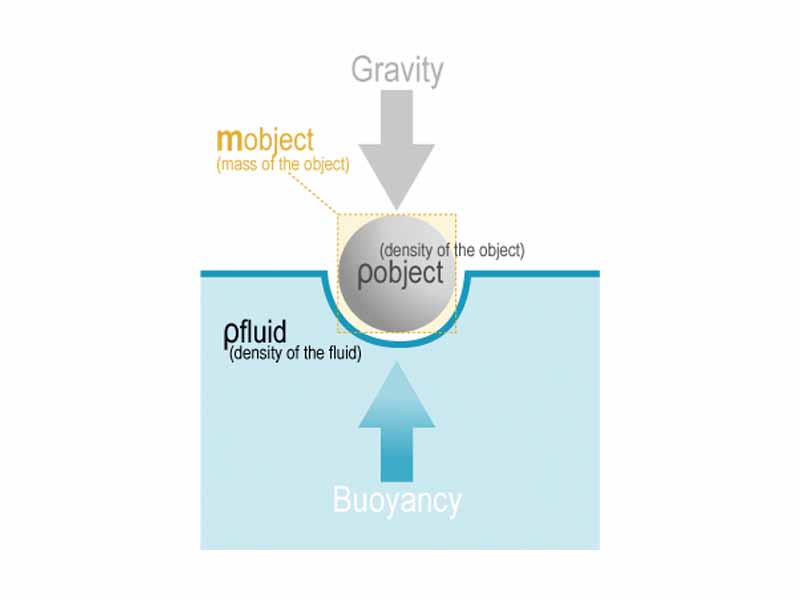Interdisciplinary Note (2 of 13)
One of the skills you learn in Newton's laws is how to construct free body diagrams. Within fluid mechanics, free body diagrams are crucial for conceptualizing and working with Archimedes' principlet.
Archimedes' principle is a favorite of the MCAT. To describe either a floating or a submerged object, always begin with the free body diagram. A floating object displaces an amount of water equal to its own weight, so for a floating object, the weight and buoyant force are in equilibrium.
For the submerged object, though, the weight of the water displaced (and thus the buoyant force) is not determined by the weight of the object, but by its volume. The submerged object displaces its own volume of water, and it is the weight of this water which produces the buoyant force.
To summarize, in both cases, floating or submerged, the 'buoyant force equals the weight of the water displaced'. However, for the floating object, the forces are in equilibrium (the weight of the water displaced equals the weight of the object). This is not the case for the submerged object, where the weight of the object is often greater than the weight of the water displaced (if an object is more dense than water, the object will weigh more than an equal volume of water).
